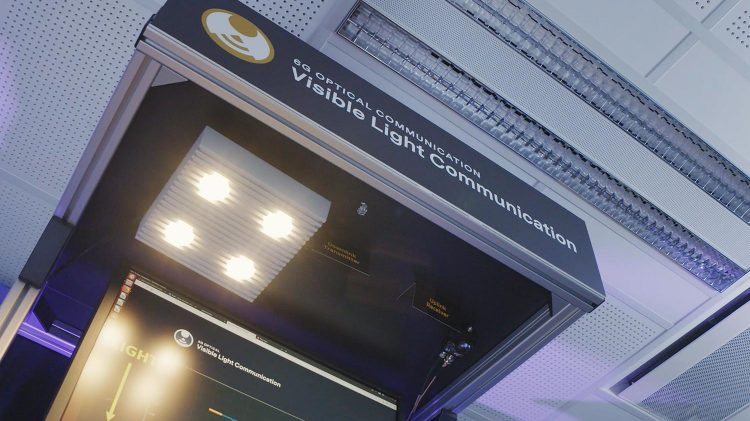
Light and Radio Waves Connecting the Future World
Visible light and radio technologies might not appear as an obvious match for maximizing connectivity. Inspired by the solid-state luminaries available in abundance in our built environment, researchers are now showcasing practically how visible light can be used for transmitting information wirelessly – besides keeping us humans fully operational in the northern winter darkness.
Commercial LED-based lamps are an underused sustainable asset at an easy reach. “White LEDs are expected to be everywhere,” says Prof. Marcos Katz, who has explored Visible Light Communications (VLC) with his team since 2014. “Today the global penetration of LEDs is close to 50%. We expect that it will reach 90% by 2030, which creates a massive potential.“
In 6G Flagship’s VLC demonstration, Katz and his team illustrate some of the key capabilities of light-based communications flexibly combined with radio communications. “We envision that already around year 2030, mobile devices will support both optical and radio technologies and VLC will complement radio,” Katz says. “The advantages of both systems are combined in our demo where radio and optical communications are used cooperatively.”
The demonstrator supports up to 12 Mbps with off-the-shelf LED luminaries which are used to transmit information using visible light from the optical access point at the ceiling to a mobile device. In the opposite direction, the setup uses infrared light which is invisible to the human eye. In addition to light, radio can be used to provide connectivity between both ends.
The monitor in the demonstrator shows in real time whether the light or radio signal is being used as well as some performance figures such as data throughput. For easy visualisation, the signal in the demo is a video clip.
In reality, any type of information can be transferred by light or radio – be it voice, data or video. “VLC is highly practical for transmitting information over a short distance,” Katz explains. “It can be used in indoor, outdoor and in vehicular environments, for instance. The typical communication range is several meters, up to 10 meters.”
Light has a lot of advantages. Yet, relying on it alone would be challenging. “In practice, light can easily be interrupted or blocked,” Katz says. “In such a situation, radio can be used to ensure seamless connectivity.”
The team has designed and implemented and hybrid VLC-radio communication system taking this vulnerability into account. “We are showing what happens if the light reaching the receiver is obstructed,” Katz says. “The system will automatically switch to a radio mode and the viewer will not see any disturbances in the video. Special emphasis was placed on designing a system that allows for rapid switching from one transmission mode to another, resulting in seamless operation.”
In the demonstration, the operation can be controlled dynamically with a reconfigurable communication network. “The selection of radio or light can be done automatically and independently in both transmission directions,” Katz explains. “The selection of radio or light can be rapidly changed according to the prevailing conditions such as changes in the channels, mobility of users, availability of light sources, or decision by the users.”
A control algorithm helps in deciding what is the best way to transmit information. “In a hospital, in order to reduce possible interference to sensitive equipment, the use of light would be maximised, and the use of radio minimised,” Katz says. “By contrast in an office, if high data rate support is needed, both radio and light can be used simultaneously.”
In addition to everyday environments such as home, office and public places, VLC is particularly suited for challenging places. “We are now considering the use of VLC in sensitive scenarios such as hospitals, manufacturing plants, and aircrafts,” Katz says. “In an aeroplane, for instance, the system will prefer to use light, because of its security characteristics, such as no interference to other equipment. Also, scenarios with challenging propagation are of great interest including underwater, mining and industrial, to name a few.”
Light-based communications is very secure because the light signal remains confined in the room where the user is located. “No-one outside of the room can listen to our communication,” Katz explains. “So, it’s very secure and private.”

In terms of performance and feasibility, light is also highly competitive. “We have a huge amount of spectrum available for light which is unlicensed and it is free to use,” Katz notes. “We can also support very high data rates, even hundred of gigabits per second.”
The distinguishing factor could finally come down to users as individuals. “Today, the user has no other option than radio,” Katz points out. “The use of VLC can therefore empower the user. It is another option which is intuitive, secure, private, and green.”
Watch the demo video
This article has been published in the 6G Waves magazine. Get a taste of our digitalized future and download the latest issue of 6G Waves!